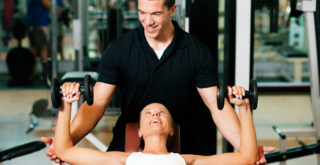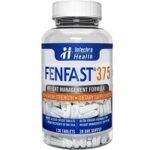 Exercise in hot weather can become a tricky affair. Whether you’re used to heading out for a brisk walk, a run, a game of basketball in the driveway or even a round of golf, summer weather can make things challenging. It’s very important to apply common sense to your workouts to avoid the discomfort and potentially dangerous impact of heat-related illnesses.
Exercise in hot weather can become a tricky affair. Whether you’re used to heading out for a brisk walk, a run, a game of basketball in the driveway or even a round of golf, summer weather can make things challenging. It’s very important to apply common sense to your workouts to avoid the discomfort and potentially dangerous impact of heat-related illnesses.
How Exercise in Hot Weather Affects Your Body
When you exercise in hot weather, it’s important to understand that your body is facing additional stresses. If you aren’t careful while you work out, you are placing yourself at risk of serious illness that can come on quickly and have very unpleasant symptoms that can place your health in danger if not properly managed.
After all, the warm weather itself already strains your body, but on top of that, exercise in hot weather adds more heat. The temperature of the air, the humidity, and the additional heat you’re producing with your actions can rapidly raise your core body temperature. The humidity is a factor that should not be ignored. The higher the humidity, the longer it takes for your sweat to evaporate from your skin. Since it is the evaporation, and not the sweat itself, that creates the cooling effect, your body is pushed even harder because its cooling process isn’t as effective.
Know the Signs of Heat-Related Illnesses
Before you exercise in hot weather, make sure you know the signs of heat-related illnesses, so you can act appropriately to overcome them if they happen.
Some of the most obvious signs and symptoms include the following. That said, if you exercise in hot weather and experience other discomforts or unexplainable symptoms, it’s best to take a rest, hydrate, and make sure you’re okay before deciding if you should continue.
- Heat cramps
- Heat syncope or exercise-associated collapse
- Heat exhaustion
- Heatstroke
- Confusion and/or irritability
- Headache
- Dizziness and/or fainting
- Heart rhythm problems
- Nausea and/or vomiting
- Fatigue
- Visual problems
If you experience any of these symptoms, stop exercising immediately, drink some water, go somewhere that you can cool down, or use cold water or ice packs to cool down. If these symptoms are anything other than very mild and non-progressing, seek immediate medical attention to prevent organ failure, brain damage, or even death.
Tips to Safely Exercise in Hot Weather
This doesn’t mean that you cannot exercise in hot weather. However, when you do, take the following precautions.
- Pay attention to the temperature. Check the weather and look for heat alerts.
- If you always exercise in air conditioning, ease into the heat over at least two weeks before you do full workouts in the hot weather. Your body will adapt, but it takes time. Keep your outdoor workouts short and reduce intensity until you have acclimated.
- Understand your fitness level. Know how far you can push yourself and always err to the side of caution.
- Drink lots of fluids and sip regularly as opposed to drinking more less often. Hydration is key. Don’t wait until you’re thirsty.
- Dress in lightweight, loose-fitting clothing. Choose lighter colors and wear a wide-brimmed light-colored hat if possible.
- Do your workouts in the morning or later in the evening to avoid the hottest times of the day? Stick to shady areas when possible.
- Wear sunscreen, as sunburns reduce the body’s capability to self-cool.



















